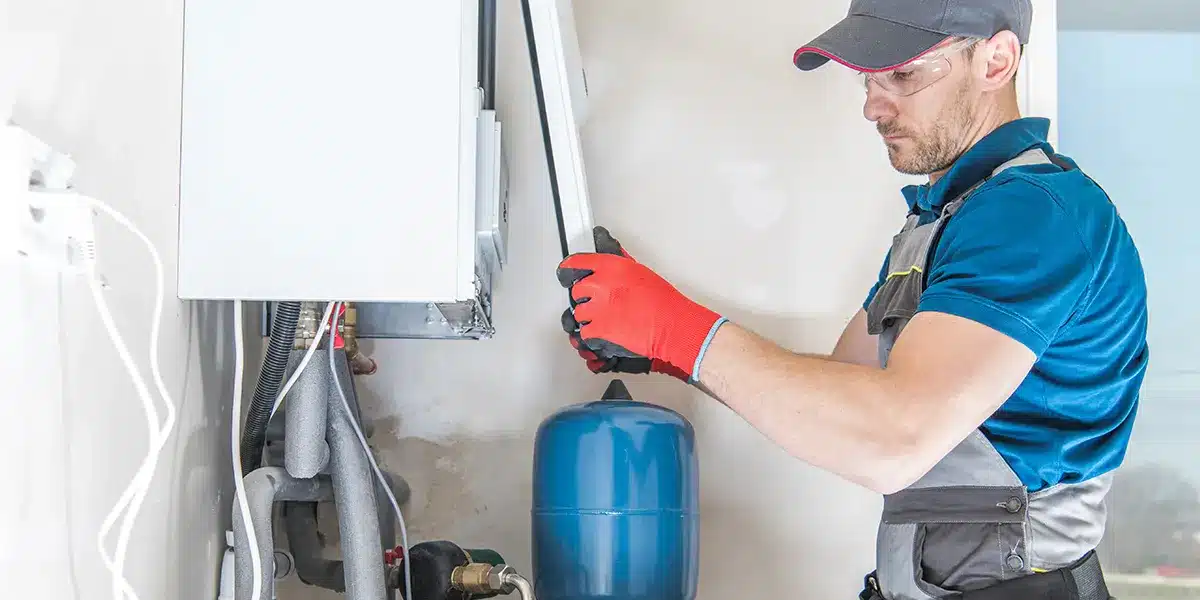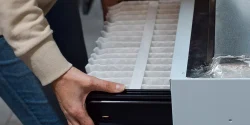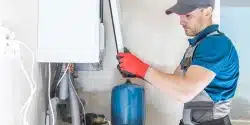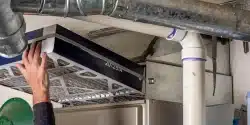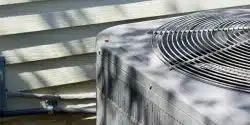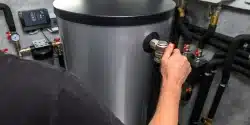When your furnace starts acting up, you’re left asking: Is this worth repairing, or is it time to replace it altogether? Deciding to repair vs. replace your furnace can affect your comfort, energy bills, and home value, so it shouldn’t be taken lightly. Whether you’re dealing with an older furnace, frequent breakdowns, or skyrocketing heating costs, knowing when to fix and when to upgrade is crucial. Let’s walk through the signs and costs with some professional guidance to help you make the best call.
How a Furnace Works
Most furnaces in Kelowna (especially natural gas models) use a heat exchanger to warm the air that’s circulated throughout your home. The system is rated by its annual fuel utilization efficiency (AFUE); modern high-efficiency models can achieve 90–98%, while older units may only be 56–78% efficient. Maintenance keeps everything running safely and smoothly, but poor upkeep allows sediment buildup, cracked heat exchangers, or outdated parts to quietly drag down efficiency and comfort.
Signs It’s a Minor Issue vs. Signs You Need Replacement
Not every strange noise or temperature dip means your furnace is on its last legs. Sometimes, a small adjustment or part replacement is all it takes. Other times, the problem points to a furnace that’s simply too old or inefficient to keep up. Here’s how to tell the difference.
Minor Issues (Often Repairable)
If your furnace is under 15 years old and otherwise in good shape, many common issues can be solved with a simple furnace repair:
- Uneven heating or weak airflow: Usually caused by dirty filters, blocked vents, or minor duct problems. These are inexpensive fixes.
- Odd noises (rattling, squeaking, or clicking): Often due to loose panels, worn belts, or minor mechanical parts that can be adjusted or replaced.
- Pilot light goes out: On natural gas furnaces, this can be caused by dirt on the sensor or a draft, both simple for an HVAC professional to address.
- High energy bills in winter: Sometimes this isn’t a failing furnace; it’s just overdue for a tune-up to improve heating efficiency.
- Short cycling (turning on and off quickly): Often fixed by cleaning sensors, adjusting thermostat settings, or improving airflow.
If your system still reliably heats your home and the cost of the repair is minor, repair is usually the right choice.
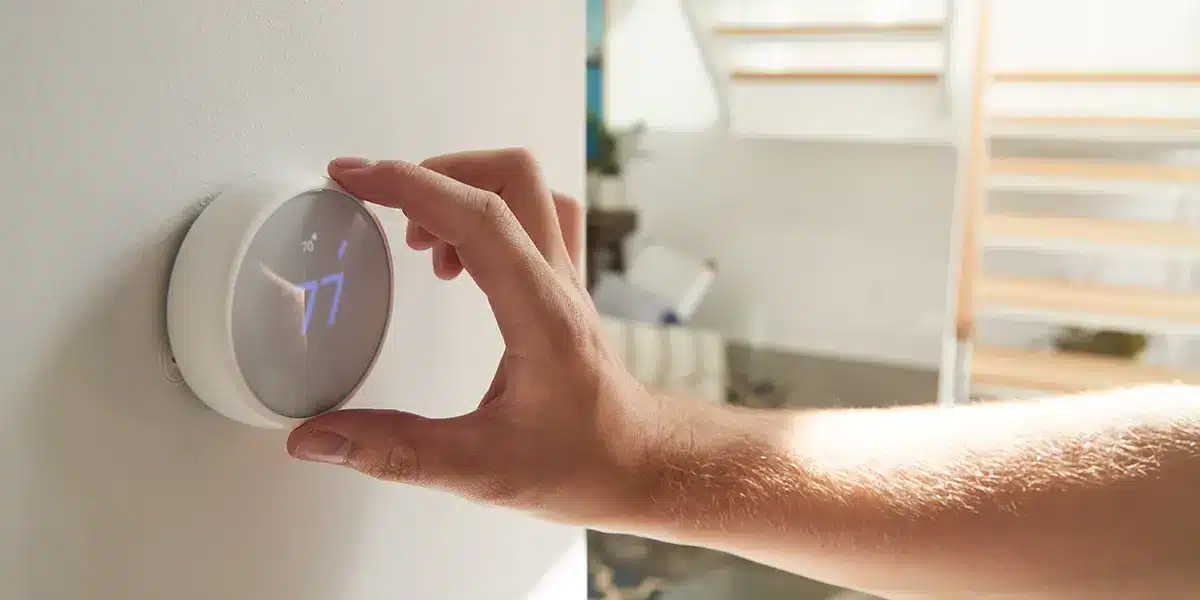
Major Red Flags (Likely Time to Replace)
When problems are more serious, or your furnace is past its prime, repair costs may only delay the inevitable. Consider replacing your furnace if you notice:
- Frequent repairs: If you’ve had to call for service more than two or three times in a season, the costs add up quickly.
- Age over 15 years: Even well-maintained older furnaces lose efficiency and reliability with time. If yours is near 20 years old, replacement is often the smarter investment.
- Cracked or failing heat exchanger: This part is central to safe operation. A damaged heat exchanger can leak dangerous gases and almost always means replacement.
- Unusual smells or soot around the furnace: Could signal incomplete combustion, which is both unsafe and costly to fix long-term.
- Rising energy bills despite regular maintenance: If your AFUE (annual fuel utilization efficiency) rating is much lower than today’s high-efficiency models, you’re paying more for less heat.
- Repair costs are half (or more) of a new unit: At that point, replacement provides better value and peace of mind.
In short, if your furnace is old, inefficient, or unsafe, investing in a new energy-efficient furnace or heat pump may save you money and headaches in the long run.

Why Regular Maintenance Can Hold Off Major Repair Costs
Keeping up with furnace tune-ups can extend the life of your system, regardless of whether it’s a heat pump, natural gas or electric model. Seasonal maintenance can also mean more efficient and less frequent repairs.
Ongoing maintenance can keep older furnaces performing efficiently, reducing extra wear. It can also help prevent sediment buildup, which degrades AFUE and forces older furnaces to work harder. Regular checks are an effective way to detect early warning signs, like minor duct issues or failing components, before they evolve into urgent and expensive repairs. Regular furnace maintenance can even lower your energy bills, as consistent upkeep can keep aging systems running closer to their original efficiency.
Value of a New High-Efficiency Furnace
Installing a new energy-efficient furnace (especially high AFUE units) can offer:
- Up to 15% improved fuel efficiency compared to old models.
- Increased reliability and longer overall lifespan, often supported by better warranties.
- Worthwhile ROI through energy savings and improved home comfort.
- Compatibility with modern HVAC systems by integrating air conditioning, heat pumps, and smart thermostats seamlessly.
What Husky Heating & Cooling Can Do for You
Our HVAC professionals are here to guide that repair-or-replace choice with guidance informed by years of experience.
- We assess AFUE, evaluate the cost of the repair, and consider your furnace’s age and issue history.
- We can service everything holistically, from air conditioning integration to switch-outs with high-efficiency replacements or heat pump systems.
- Whether it’s a furnace repair or a full replacement, our team ensures everything is handled with care, transparent pricing and respect for your home.
FAQs
1. How long does a furnace typically last?
Gas furnaces usually last 15–20 years with proper maintenance; electric models may last longer.
2. Is it worth repairing an older furnace?
If it’s still efficient and not costing you more than half of a new unit, repair may be worth it, but replacement should be on your radar soon.
3. What does high-efficiency (AFUE) mean?
AFUE measures how well a furnace converts fuel to heat over a season. Higher AFUE means more heat and less wasted energy.
4. Are heat pumps a good replacement option?
Yes, heat pumps offer both heating and cooling, transferring rather than generating heat. They’re very efficient, especially in milder climates, but may need support in extreme cold. Generally, we find they’re a really good fit for the Okanagan climate.
5. How often should I schedule maintenance?
At least once a year (we typically suggest leading to the heating season) to maintain efficiency, safety, and performance.
Deciding whether to repair vs. replace your furnace hinges on your furnace’s age, efficiency, repair history, and safety condition. While annual maintenance can extend its life and lower energy bills, older furnaces beyond 15 years with frequent issues and rising heating costs may warrant replacing with a modern, energy-efficient model.
Are you ready to assess your options? Reach out to Husky Heating & Cooling to get timely, professional advice tailored to your situation. We’ll help ensure your home stays warm, efficient, and hassle-free.

